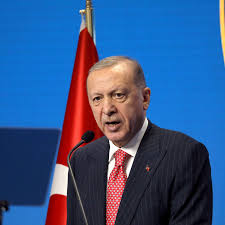
As of 2024, the global trade landscape is undergoing significant shifts, heavily influenced by fluctuating energy prices and geopolitical dynamics. The ongoing effects of the Ukraine conflict, alongside the recovery from the COVID-19 pandemic, have reshaped how countries engage in trade and manage their energy resources.
1. Energy Price Volatility
Energy prices have seen considerable volatility, largely due to geopolitical tensions and supply chain disruptions. Crude oil prices, for instance, have fluctuated significantly, impacting economies reliant on oil imports. Analysts expect continued uncertainty as conflicts in major oil-producing regions influence global supply. The International Energy Agency (IEA) has noted that higher energy costs are not only affecting consumers but also increasing operational costs for industries globally Impact on Global Trade
Higher energy prices have a cascading effect on global trade. Countries that rely heavily on energy imports face increased transportation and production costs, leading to inflationary pressures. As a result, some nations may reconsider their trade partnerships or seek to boost domestic production capabilities to mitigate these impacts. For example, the European Union is emphasizing energy diversification to reduce reliance on Russian gas, fostering trade with alternative suppliers .
ansition**
In response to the volatility of fossil fuel markets, many countries are accelerating their transition to renewable energy sources. Investments in solar, wind, and other green technologies are rising as nations seek to enhance energy security and reduce carbon emissions. This transition not only aims to stabilize energy prices in the long run but also creates new opportunities for international trade in renewable technologies and resources .
4. Trade Agreementnerships
To adapt to these changes, nations are actively pursuing new trade agreements. Countries in Asia, for instance, are increasing their economic ties, focusing on shared energy resources and technology transfer. The Association of Southeast Asian Nations (ASEAN) is looking to enhance regional cooperation in energy trade and infrastructure development, thereby bolstering resilience against global price fluctuations .
Conclusion
The global tradis intricately linked to energy prices, influenced by geopolitical factors and the ongoing transition towards sustainable energy. As countries navigate these complexities, they are adapting their trade strategies to ensure economic stability and growth in a rapidly changing environment. For more detailed insights into this evolving situation, further reading can be found in reports from the IEA and various economic analyses.
Sources:
- International Energy Agency (IEA)
- ASEAN Economic Community Reports
- Global Trade Analysis Reviews
4o mini




